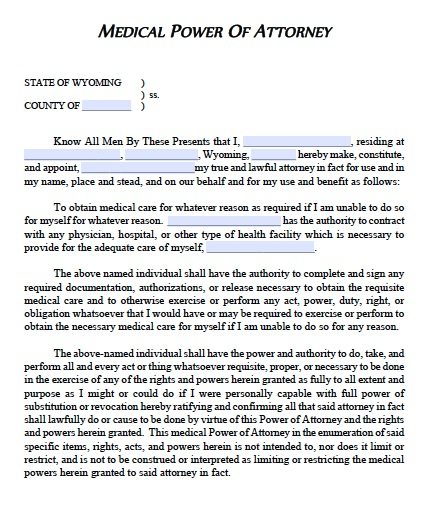The sickest 5% of the population develop 50% of overall health care expenses, while the healthiest 50% only develop 3% of expenses. People have less monetary reward to remain healthy: Without a copay, people might overuse emergency situation rooms and physicians. There are long wait times for elective procedures: The federal government focuses on providing basic and emergency healthcare.
Healthcare costs. For instance, some Canadian provinces spend nearly 40% of their budget plans on healthcare. with a low probability of success. This includes drugs for unusual conditions and pricey end-of-life care. In the United States, take care of patients in the last 6 years of life comprises one-fourth of the Medicare spending plan.
Standardizes service. Creates a much healthier workforce. Avoids future social expenses. Guides people to make much healthier options. Disadvantages Healthy people pay for the sickest. Individuals have less monetary reward to remain healthy. Long haul times. Medical professionals might cut care to reduce expenses. Healthcare expenses overwhelm government budgets. The government might limit services that have a low probability of success There are three universal healthcare models.
Countries often integrate universal health coverage with other systems to introduce competitors. These alternatives can reduce costs, broaden choice, or improve care. Citizens can also choose much better services with supplemental private insurance coverage. The United States provides different models for populations such as the senior, veterans, and low-income people. In a single-payer system, the federal government provides totally free healthcare paid for with income from earnings taxes.
Every citizen has the same access to care. This is called the Beveridge Model. When governments supply health care, they work to ensure physicians and health centers offer quality care at a reasonable cost. They should collect and examine information. They can also use their buying power to influence healthcare providers.
The Only Guide to What Is Essential Health Care
Other countries consist of Spain, New Zealand, and Cuba. The United States provides it to veterans and military workers with the Department of Veterans Affairs and the militaries. Countries that use a social medical insurance model requires everyone to buy insurance coverage, typically through their companies. The taxes go into a government-run medical insurance fund that covers everybody.
The government controls medical insurance rates. It also has a great deal of clout to control the private-providers' costs. Germany established this system. France, Belgium, the Netherlands, Japan and Switzerland likewise use it. The U.S. Obamacare system likewise requires insurance coverage, however there are numerous exemptions. It is also comparable because it offers aids to medical insurance companies for low-income enrollees.
Every citizen pays into the national insurance strategy. Administrative expenses are lower since there is one insurance coverage business. The federal government has a lot of leverage to require medical expenses down. Drug Rehab Canada, Taiwan, and South Korea use this design. The U.S. https://luminarypodcasts.com/listen/transformations-treatment-center/addiction-is-a-disease-transformations-treatment-center/finding-addiction-treatment-near-pembroke-pines/44132175-84f4-4f51-8d63-a32a816fe4d4 Medicare, Medicaid, and TRICARE systems also utilize this design Australia has a mixed health plan.
Everybody receives protection. Individuals must pay deductibles prior to government payments start. Numerous locals want to pay for extra personal health insurance coverage to receive a higher quality of care. Government regulations secure seniors, the poor, children, and rural homeowners. In 2018, healthcare cost 9. 3% of Australia's gdp.
The per capita expense was US$ 5,005, about average for developed nations. There were 42. 6% of clients who reported a wait time of more than four weeks to see a specialist. Australia had among the best infant death rates of the compared nations at 3. 1%. Canada has a national health insurance system.

Which Of The Following Is True About The Health Care Latinos Receive? Fundamentals Explained
Personal additional insurance coverage spends for vision, oral care, and prescription drugs. Medical facilities are publicly funded. They offer complimentary care to all citizens no matter their capability to pay. The government keeps health centers on a fixed budget plan to manage costs, but compensates physicians at a fee-for-service rate. In 2018, health care cost 10.
The cost per individual was US$ 4,974. A tremendous 62. 8% of clients waited more than 4 weeks to see a specialist. The baby death rate was 4. 3%, amongst the countries compared. France has a social health insurance coverage system that offers care to all legal homeowners. That consists of medical facilities, doctors, drugs, and some dental and vision care.
Of that, payroll taxes fund 64%, income taxes pay for 16%, and 12% is from tobacco and alcohol taxes. In 2018, healthcare expense 11. 2% of GDP. That was US$ 4,965 per person. Half of all patients reported a wait time of more than 4 weeks to see a specialist.
4%. These stats are all in the middle of the pack for developed countries - a health care professional is caring for a patient who is about to begin receiving acyclovir. Germany has a social health insurance program. Everyone must have public health insurance coverage, but those above a specific income can select personal insurance coverage rather. The state-sponsored insurance covers hospitalization, except for meals and lodging. It also covers rehabilitation for healthcare facility stays, psychological health, and dependency.
Funding originates from payroll taxes. In 2018, healthcare expense 11. 2% of GDP. It balanced US$ 5,986 per person. Both figures are about average. Just 28. 1% of patients reported a wait time of more than four weeks to see an expert. That is amongst the most affordable of the industrialized countries.
A Biased View of A Health Care Professional Is Caring For A Patient Who Is Taking Zolpidem

The infant mortality rate was 3. 1%. The country has a social health insurance coverage system for all residents. why doesn't the united states have universal health care. Coverage is offered by completing personal insurance coverage business. Homeowners pay premiums up to 8% of their income. The federal government reimburses them for any higher costs. People can purchase supplemental insurance coverage to gain access to better health centers, doctors, and facilities.
2% of GDP. It was USD $7,317 per person. Only 27. 3% of patients reported a wait time of more than four weeks to see an expert. The infant death rate was 3. 7%. The UK has single-payer health care that covers all locals. Visitors receive take care of emergencies and contagious diseases.
The government pays 80% of expenses through earnings and payroll taxes. The rest is paid from copayments and individuals paying out-of-pocket for NHS services. It spends for all treatment, including some oral and eye care, hospice care, and some long-term care. There are some copays for drugs. In 2015, 10.
residents had personal insurance for optional medical treatments. In 2018, healthcare expenses were 9. 8% of GDP. The cost was US $4,069 per person. However 46. 4% of clients reported a wait time of more than four weeks to see an expert. The baby death rate was 3. 6%.
As a result, 67. 2% of Americans have personal medical insurance, mostly from their companies. The government funds personal medical insurance through Obamacare. Another 37. 7% of Americans have federal government coverage. These include Medicaid, Medicare, Kid's Health Insurance Program, and military coverage consisting of the Veterans Administration. Just 8. 5% had no coverage at all.
The Best Strategy To Use For Avedis Donabedian Defined Health Care Quality As Having Which Of The Following Components?
Lots of democratic prospects promote universal health care under the title "Medicare for All." In 2018, health care cost 16. 9% of GDP. That was an incredible US$ 10,586 per individual. About 28% of patients reported a wait time of more than four weeks to see a professional. That's about the same as Germany and Switzerland.